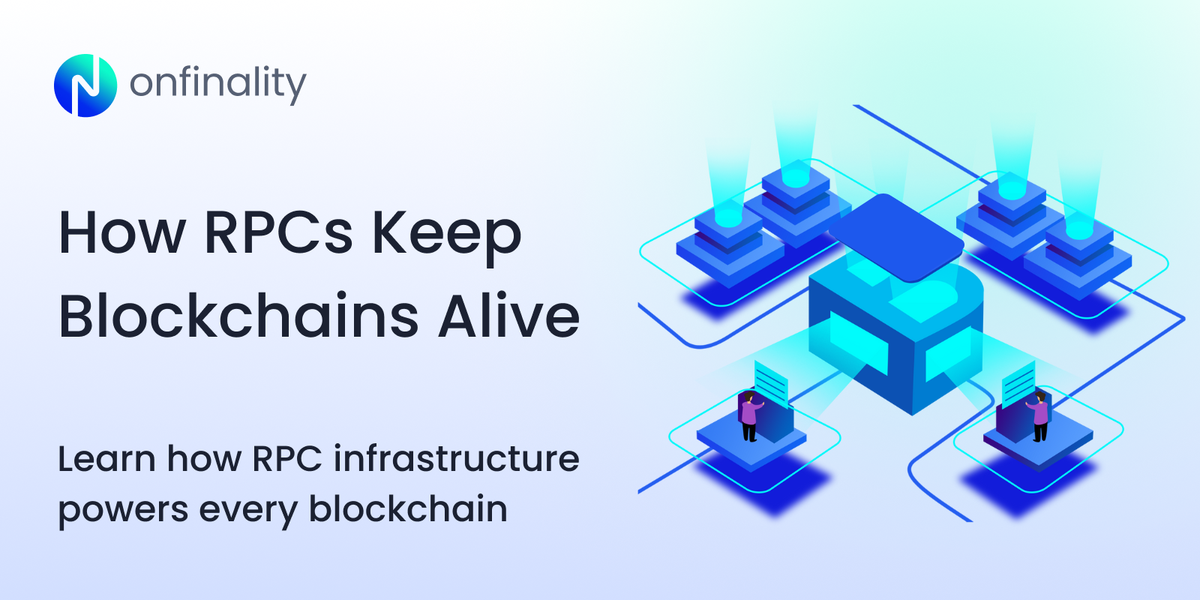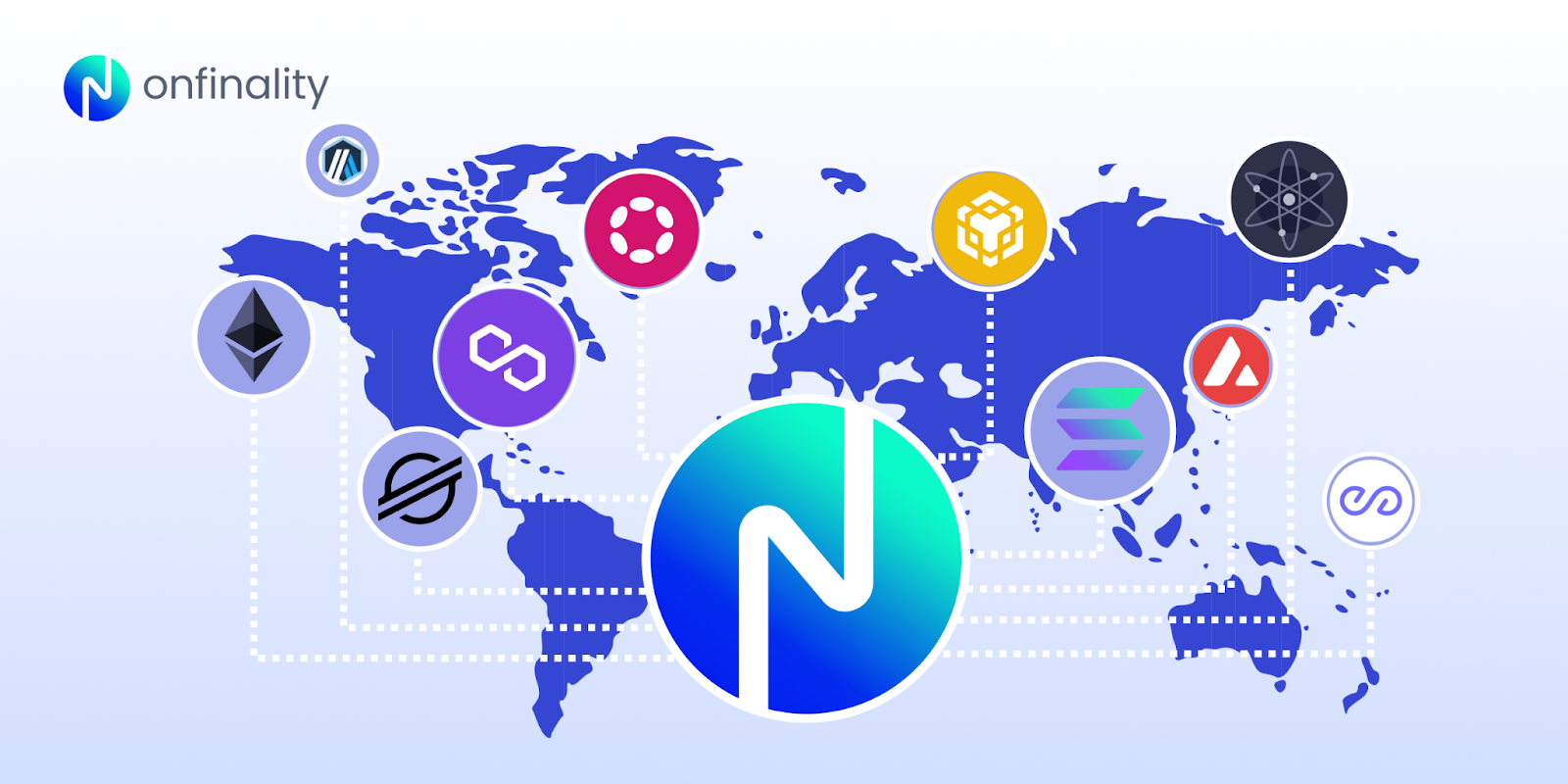How RPCs Keep Blockchains Alive
In this article, we explain what RPCs are, how they power decentralized applications, how they differ across ecosystems, and how OnFinality ensures that Web3 stays connected through their reliable and scalable RPCs

Every blockchain relies on one invisible hero, the RPC.Without it, your dApp would not be able to read data, send transactions, or even communicate with the blockchain.
In this article, we explain what RPCs are, how they power decentralized applications, how they differ across ecosystems, and how OnFinality ensures that Web3 stays connected through their reliable and scalable RPCs
What is an RPC in Blockchain
RPC stands for Remote Procedure Call. It is the communication layer that allows an application to interact with a blockchain node.
When you click "Swap" on a Uniswap (a decentralised exchange) or "Stake" on Lido (staking provider), your wallet sends an RPC request to a blockchain node. The node receives that request, executes the command on-chain, and returns a response.
In simple terms, RPCs are the bridge between the blockchain’s backend and your application’s frontend.
Without this bridge, your wallet balance could not update, your transactions would not confirm, and your dApp would stop functioning.
How RPCs Power Every dApp

Here is what happens step by step:
- The user interacts with the dApp (for example, clicking "Swap").
- The dApp prepares a transaction and sends it via an RPC call to a node.
- The node validates and broadcasts the transaction to the blockchain network.
- The result (transaction hash or confirmation) is returned to the dApp through the same RPC layer.
This constant communication keeps your dApp responsive and synchronized with the blockchain.
OnFinality RPCs Across Different Blockchain Ecosystems
Not all blockchains process RPC calls the same way. Each ecosystem has its own architecture and requirements.
Ethereum and EVM Chains (Base, Arbitrum, Polygon)
These networks use the Ethereum Virtual Machine (EVM) to execute smart contracts. RPCs here follow a standardized JSON-RPC format, making it easier for developers to build and integrate across multiple EVM-compatible chains.
Polkadot and Substrate Networks
Polkadot uses a Substrate-based RPC layer that includes chain-specific methods through custom pallets. This allows networks built on Substrate to expose additional RPC endpoints tailored to their functionality, such as accessing parachain or relay chain data.
Solana
Solana uses the Solana Virtual Machine (SVM), which supports parallel transaction execution. Its RPC framework is optimized to handle large volumes of simultaneous requests, supporting Solana’s high throughput design.
Astar Network
Astar supports multi-VM compatibility, allowing both EVM and WASM (WebAssembly) smart contracts to run on the same network. This flexibility requires RPC endpoints that can process different types of execution environments efficiently.
Cosmos Ecosystem
Cosmos networks use the Tendermint consensus engine, where RPC calls allow developers to query blockchain state, broadcast transactions, and interact with modules across interconnected app chains enabling seamless communication within the Cosmos Hub and its zones.
Each ecosystem handles transactions, state changes, and calls differently. That is why RPC providers like OnFinality must fine-tune performance and reliability to meet each network’s specific demands.
Why RPC Reliability and Latency Matter
When RPCs slow down or go offline, users notice immediately.
A single RPC outage can lead to:
- Failed token swaps
- Delayed staking confirmations
- Frozen dashboards or analytics
These failures do more than interrupt transactions; they erode user trust. In Web3, reliability and speed directly influence adoption.
To ensure stability, Onfinality focus on three key principles:
- Uptime: Continuous availability of node connectivity for dApps.
- Latency: Rapid response times even during traffic surges.
- Scalability: The ability to handle thousands of requests simultaneously.
Reliable RPCs mean developers can deliver seamless user experiences regardless of network load.
Common Questions about RPC
What is an RPC in blockchain?
RPC (Remote Procedure Call) is the communication layer that allows decentralized applications (dApps) to interact with blockchain nodes enabling actions like reading data, sending transactions, and fetching balances.
How do I connect to an RPC endpoint?
You can connect by copying the RPC URL from your provider (like OnFinality) and pasting it into your wallet, dApp, or SDK configuration. Once added, your application can send and receive blockchain requests through that endpoint.
Why is RPC reliability important for dApps?
Reliable RPCs ensure that users can interact with blockchains without delays, errors, or failed transactions. Poor RPC reliability can cause failed swaps, missing balances, and an overall bad user experience.
How does RPC latency affect blockchain performance?
RPC latency determines how fast a blockchain node responds to requests. High latency can delay transaction confirmations and slow down dApp responsiveness, while low-latency RPCs like OnFinality’s ensure smooth real-time updates.
Final Thoughts
RPCs are essential for keeping blockchains functional and connected. As more dApps and networks emerge, reliable and scalable RPC infrastructure becomes critical for smooth on-chain interaction. OnFinality provides developers with the speed, stability, and scalability needed to keep Web3 applications running seamlessly across multiple ecosystems.
Need support or want to scale your project with OnFinality RPC? Reach out at support@onfinality.io or connect with us on Telegram to start building the next generation of Web3 dApps.
About OnFinality
OnFinality is a blockchain infrastructure platform that serves hundreds of billions of API requests monthly across more than 130 networks, including Avalanche, BNB Chain, Cosmos, Polkadot, Ethereum, and Polygon. It provides scalable APIs, RPC endpoints, node hosting, and indexing tools to help developers launch and grow blockchain networks efficiently. OnFinality’s mission is to make Web3 infrastructure effortless so developers can focus on building the future of decentralised applications.
